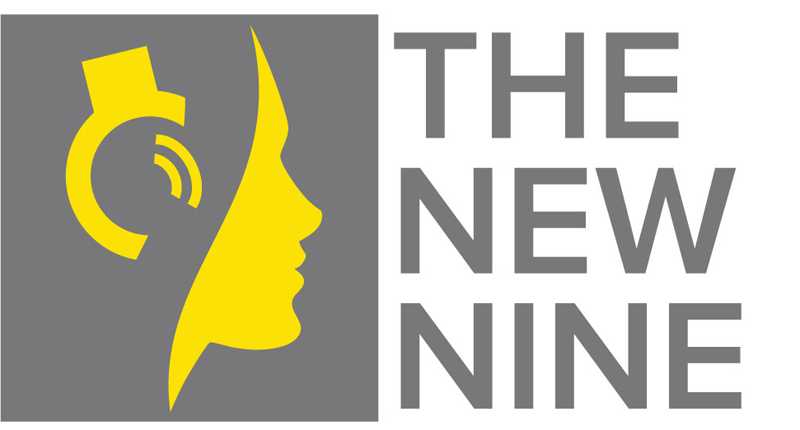In the biological world, mimicking birds, like parrots and mockingbirds, imitate the songs of other birds – or any other noises in their environment that they happen to fancy, including human speech – for the express purpose of attracting mates. The band Mimicking Birds, however, prefers to flip the script when it comes to etymology. According to front-man and songwriter Nate Lacy, the intriguing name derives mainly from the early song “New Doomsdays,” in which he gives credit where it is due via the lyric “since when we learned to fly, mimicking birds, we share the sky” and to a lesser degree from a tooth whistle he possesses that takes on an avian quality in the vocal delay. It is also the colloquial moniker he took to writing on the tapes he would record in his home long before he expected anyone to ever hear them.
In a way, the name he has chosen, however subconsciously, makes an odd sort of perfect sense when you consider the music he creates. It is at once ethereal and calming, yet punctuated by undertones of the haunting and melancholy, not unlike a foggy twilit forest, leaving more to the imagination than it reveals. Each song is its own wilderness soundscape of mountains, forests, valleys, and seasides with vocals permeating the terrain like weather, delivering lyrics that do not shy from presenting harsh truths about the state of the natural world, humanity, the cosmos, and the way everything eternally interrelates. Lacy’s viewpoint is a humble one: he would sooner us mimic the birds than teach a parrot to speak like us.
It is surely this unassuming perspective on existence that eventually took his talents from secretive home recordings to the ears of the appreciative masses in an origin story for the ages. As the indie rock legend goes, Lacy had been sharing his early demos exclusively with a close friend, who was so impressed by what he heard that he emailed a few songs to Isaac Brock of Modest Mouse. Brock, a fellow advocate of the natural world prone to sharing existential views on humanity through song, took a listen, found the music both inventive and enduring, and contacted Lacy through MySpace. After a few meetings and discussions, Mimicking Birds was signed to Glacial Pace Recordings, Brock’s own record label, in 2008 and work began on recording the first album. “It was pretty surreal for me,” Lacy acknowledges, “I’d been a huge Modest Mouse fan for a long time and I was very influenced by Isaac’s songwriting.”
It was a seemingly predestined meeting of minds, as much of Lacy’s early work was also heavily inspired by Ugly Casanova, Brock’s side project with fellow musician Holopaw.
The self-titled debut album was released in 2010, and a follow-up entitled “Eons” came out in 2014. To this day, Brock remains a devoted mentor. Both albums were recorded at his home in Portland, Oregon and often feature his electric guitar work and even background vocals on “The Loop.” He has also taken the band on the road with Modest Mouse on numerous occasions since 2009, giving them practice performing their music as a live act. And so it was that Lacy, who never had any intention of “getting out there,” now found himself playing his acoustic guitar and singing in front of hundreds at festivals, backed by a full band of his close friends (including Aaron Hanson on drums and Adam Trachsel on bass and keys). “It’s still surreal.” Lacy adds with a laugh.
Especially given that a career in music was never his intent. “My mother was an illustrator, so she taught me how to draw. That was kind of the main thing when I was going to school, growing up. Music was kind of a separate life. I took piano lessons for years and all that. I was in school band. But I’ve always wanted to be a graphic designer or something.”
Halfway through high school, he had abandoned piano lessons, purchased his own guitar, and started teaching himself to play. “I started playing guitar and just learning basic chords, feeling words coming out on top of the chord progressions. I would do it on piano, too, on very simple two chord type things.” His songs typically begin with the instrumental music, and the lyrics resolve themselves later in the process. “The music definitely inspires imagery and therefore the words come out of that. But I’ll try to formulate an overall theme or concept before I get too far into writing out lines. Sometimes I’ll just manipulate the sounds of it – it just feels like gibberish coming out and the words will slowly turn into whatever – kind of like remembering. It’s like you’re digging it out of somewhere where it’s already existed. It just seems right. Like a forgotten language, kind of. Mason Jennings put it that way once: like you’re remembering a forgotten language.”
It is easy to hear this linguistic ontogeny in the effortless rhythm of lines like “corn fields turn beige and into mazes” and “eons beyond being long gone.”
While his lyrics have evolved over the years, becoming less candid and leaning more towards the metaphorical and poetic, the central themes involving ecology, humanity as a devastating force, and eternity remain constant. “I feel like I’m writing the same song over and over again all the time,” he laughs. While this is blatantly untrue (I would counter him with his own words: “it’s all relatively arranged in such familiar ways”), nature is definitely his muse and most of the band’s catalogue reflects in some way on the beauty and tragedy he observes in the natural world around him.
Some songs comment innocently on biological fluidity, stating facts: “faster we’d swim through water if we still had fins,” and alluding to the connectivity of all life on Earth, “pathways, holes, and cords connect everyone to each pair of lungs inflating under the sun.” Other songs urge us to consider where we have come from and where we are going by illustrating the dynamic aspect of evolutionary progression through geologic time with lines like “sliding down the timeline, pulling the nerves up through your spine” and “warm eras shift back into ice ages, I go extinct and retrogress to simpler phases.” “I’m always thinking about it,” Lacy explains, “how evolution led us here, why we’ve developed a certain way, why we are the way we are. I saw this thing the other day – they think chimps are officially in the Stone Age. And I thought that was in interesting perspective.” Life, as we know it, is anything but constant – and we are not merely casual observers.
Many of Lacy’s songs console, reminding us that we, as humans, are just part of a greater system, trapped in a technological whirlwind of our own making: “I’m just a normal organism,” he declares on 2010’s “New Doomsdays,” “I am a creature of mixed up energies, in times of restraint, living in captivity,” he expands in 2014’s “Bloodlines.” But when is simply going with the flow of existence not acceptable for such a cognitive species? How can we continue to take when we know there is not much left? A frustration that borders on anger sometimes comes through in lines like “first thing to slither up on land was a fish, walked to the forest to build cities with it.” How incongruous it seems that the species at the pinnacle of cognitive ability is also the most destructive.
This is the central struggle that Mimicking Birds captures so well: our shared need to somehow reconcile acceptance that we are just acting as any “normal organism” would in our dominant position with the obligation of stewardship that comes with such awareness. “I’m sure it’s not me, I’m too small,” he laments in “Pixels,” “How could I affect anything at all? One in six billion can’t be at fault,” he sings, giving voice to a sense of denial and hopelessness we all feel. In “Ten Percent,” he takes a stand with the line “we are a solid army, a fleet of six billion strong, there are a few heads among us who don’t want to go along.”
The criminally catchy “Owl Hoots” takes us on a more figurative journey through our own projected demise. With its beguiling staccato drums and eager bass-line, the song immediately sweeps you up and carries you along, an experience appropriately akin to being plastered, unharmed, to the grill of a fast-moving train. But it is the lyrics and their plaintive delivery that resonate the most – this song is a warning. In folklore, the owl hoot was an omen of ill-luck and was even thought to portend death. In our present time, it is the train whistle, our famed hallmark of industrial progress, that we must now interpret as the ultimate omen of doom. He alludes to events like global warming, our coming extinction, and future ice ages – all while telling the story of a band of young train hoppers being followed by an owl. “There’s a photograph series by Mike Brodie called ‘Life on the Rails’ that really inspired that song,” Lacy explains, “It was written with a lot of that imagery in mind.”
These days, with major environmental catastrophes being a tragically regular occurrence, it is hard not to become completely absorbed with negativity. Such cynicism does come through in some songs, such as the apocalyptic 2015 single “Dead Weight,” which has Lacy proclaiming “I am a corpse, you are a corpse, look, we’re just corpses moving without a course.” Others take a nihilistic stance on the idea of mortality as evidenced by lines like “you’ll die beneath the sun, guaranteed you’ll be done, it’s as permanent as one day’s sun, we’re all one sum” and the vague hostility of lyrics like “man-made smooth wood will eventually splinter.” But the vast majority offer a unique brand of resigned optimism, whether in the form of acquiescence into infinity, as in “soon now too that light will die, but its energy never does, it burns in some other new blood” or through silver-lined sentiments like “there will always be parts and pieces of us under and in rocks.” A few even quest for proactive solutions through lyrics like “all I can even think about is a way to get through to them, to make them think like me, maybe prevent something from happening.”
Ultimately, Lacy believes that environmental awareness and change can only be effected with a positive approach, and he remains “mostly hopeful” about the plight of our planet. “I don’t like thinking that we’re like an infection or a cancer,” he elucidates, before stressing the importance of continuing to teach science, specifically evolution, in schools. “We should try to do what we know we should,” he asserts, in reference to all the seemingly insignificant little choices we each make throughout the day, “but we’re human and at the same time we have to be happy to a certain extent.” His personal tactic is simple and easily replicated: “I just try to be a good person. I try to have good interactions with people every day, every person I see. It’s those little moments that really matter the most with people and that carry on throughout their day.” When not working on his music, Lacy works in a customer service position at a hotel in downtown Portland. The countless small moments he shares with his guests have instilled a sense of well-being in him. “Our number one thing is being connected with others and without that I think life would be pointless.”
This connection extends to all creatures, as evidenced by the album artwork that accompanies the songs: the self-titled debut features a beautiful drawing of a larval cicada underground, and its successor “Eons” depicts a black and white photograph of a Polyphemus Moth atop a raccoon skull. Lacy is a true naturalist, and holds a deep respect for all life on Earth – including its most underappreciated inhabitants: insects. He attributes this love of nature’s underdogs to his mother. “When I was a kid, my mother would raise all sorts of butterflies and moths. Once she came home from the grocery store with a young cockroach, and we didn’t know what it was because it didn’t have wings yet. It took us forever to figure out what it would eat. I ended up having that thing for two years, his name was Milo.” As a child, he was always fascinated by the caterpillars and occasional rare gems, like praying mantids and big moths, that his neighbors would bring over. A few summers ago, he decided to try his hand at it again. “It just kind of re-emerged, this sort of nostalgic thing for me. And I looked it up online and sure enough there’s a guy in South Carolina who’s selling cocoons,” he laughs. “So I ordered ten of them and he sent them to me in a little box. I let them winter over outside and all of them hatched.” One of his surrogate progeny, a male with lovely plumed antennae, is now immortalized as the model moth on the “Eons” album cover.
As so many of his songs are centered on nature and the great outdoors, one would assume that Lacy does his songwriting in the forest, perhaps even around a campfire. But surprisingly, this is not the case (although he does admit that he goes camping quite a bit). “I do most of my writing at home, actually. When I’m touring and out on the road I can’t collect everything enough to write a song. I come up with riffs, maybe a few lines, like starting points, ideas – but I never really complete anything.” This, however, doesn’t mean he is not pulling inspiration from these experiences.
Like a mockingbird constantly searching for ways to expand his repertoire, Lacy gathers, or captures the “feel of,” everything from sounds like Great-horned Owl hoots in the desert, to snippets of songs he records on his iPhone memo recorder, to fragments of speech he wants to hold onto, such as the lovely cadence of the phrase “hawks winging.” Like The Smiths, Mimicking Birds frequently include interesting sound bytes from daily life that enhance the story a particular song is telling. “I’ll hear it happen and I’ll just want to record it. An idea will pop up and sometimes it might be kind of cheesy, but I like it,” Lacy laughs. Many of these sacred morsels do find themselves forever embedded in finished songs, such as the owl hoots in “Night Lights,” the coin spinning in “New Doomsdays,” and the creaky door and wheezy laughter in “Them.” Each sound comes with its own story. “The door slamming was a door in Isaac’s house and the coin spinning is on the floor of his attic,” Lacy recalls. “Those things are special, too, to remember – a lot more memorable than a guitar track.”
Other elements that end up infused in his music come from the place he finds himself most often – his home – the Pacific Northwest. Lyrics like “Pacific clouds increase and a cold wind is pulled from the east” paint the picture of life on the Oregon Coast so vividly that you feel like you are there, wearing a hoodie and flying a kite. The iconic Cannon Beach even gets its own song. This is not surprising, as Lacy grew up in a suburb of Portland, Oregon and still resides nearby. “I’ve definitely been very influenced by where I’ve grown up, everything around me.” He adds that the climate, which is typically in the realm of what most would describe as dreary and glum, actually has had a positive influence on his creativity. “I’m inspired to make music when it’s cold and rainy outside, when you only get so many hours of sunlight a day. You get all of your equipment set up. You’ve got trees blowing around in the rain, it’s gray, there’s a darkness to it.” When asked if region-specific elements, such as the dark and ominous vibe of coastal Oregon in winter, can become imbued in the very fabric of his songs, he completely agrees that it can. “I believe in that. I feel it a lot with Pink Floyd, too.”
Reconciling concepts that are at odds, making sense of many loose ends, and juggling several different pursuits at once are all important components of the creative process for Lacy. “I’ll have all sorts of parts – bits and pieces put together. Things will come to me at different times. It’s kind of spread out.” He says, of emptying his metaphorical bag of collected treasures to begin assembling ideas for an album.
Although he admits that he ultimately “just works to pay the rent” and that there is nothing he would rather be doing than writing music, there is something to be said for the yin-and-yang of life and traversing its obstacles. “I would be working on [music] all the time if I could. It’s very rewarding. But at the same time, I don’t know – there’s something about the balance between everything that keeps inspiration flowing. You can’t have all your eggs in one basket. Struggle in general – suffering – is very important.” This is why he balances songwriting with activities like working at the hotel, dabbling in Lepidoptery, drawing, and, most recently, wood burning art.
Lately, however, his main focus has been on completing the band’s third full-length album, which is nearing the end of tracking as I speak (and you read) and is slated for release to the world in the summer of 2017. Fans can expect similar lyrical themes, more captivating “bits and pieces” (including a recorded clip of an old gas pump), and what is certain to be another transcendental and stimulating aural experience.
The sky is surely not the limit for the high-flying Mimicking Birds, who have travelled a long way since inception and the futility-laced sentiments of decade-old lines like “and I know all this is impossible when I’m only music in my room.” The band, now anything but locked away in a room, is at the forefront of providing intelligent commentary on our planet’s increasingly relevant ecological concerns, promoting education and awareness through a refreshingly hopeful approach centered on making positive connections rather than seeking bitter, fatalistic isolation like so many others of their ilk. “I remember when I was writing that song I felt like it was setting me up for later somehow,” Lacy quips with a laugh. What “later” means in the face of our great inter-connectedness and the cyclical nature of life is anyone’s guess. But Lacy has been known to possess an affinity for the eternal: in his own words, “I’m definitely a believer in the infinite.”
[adsense]




